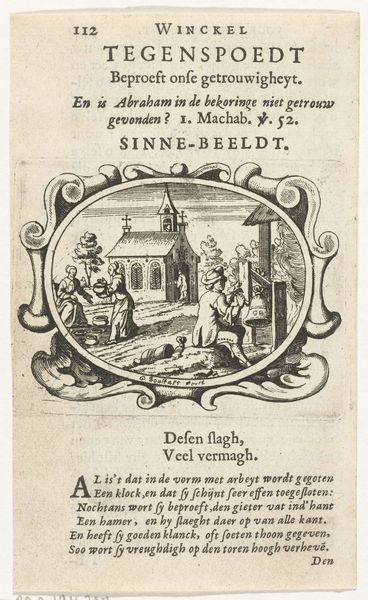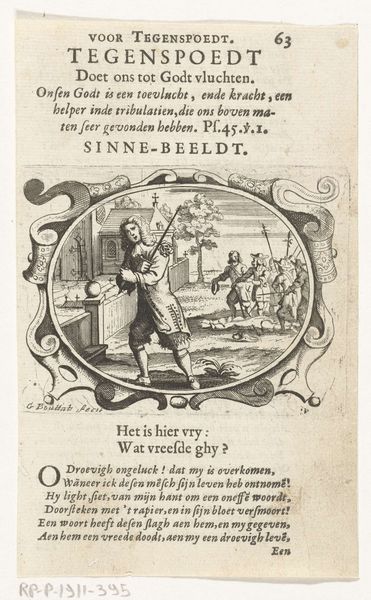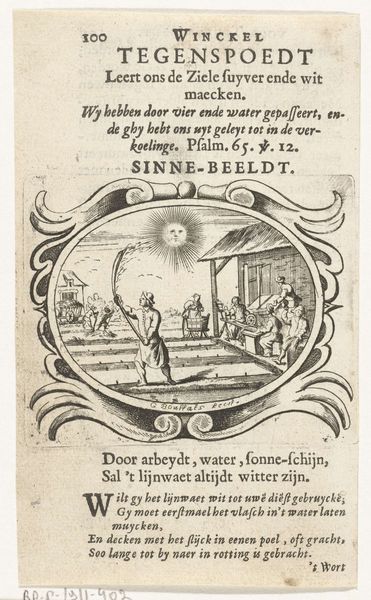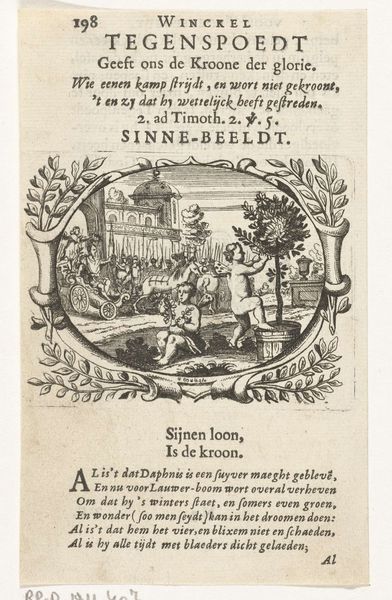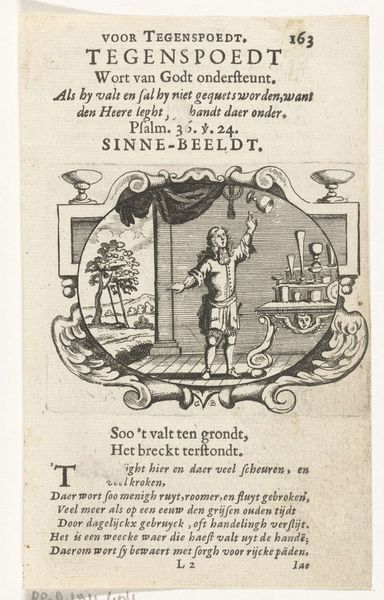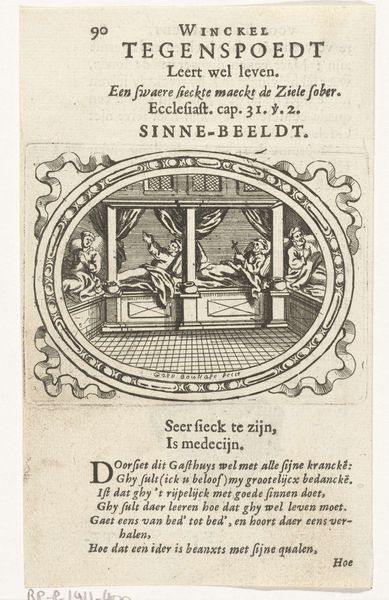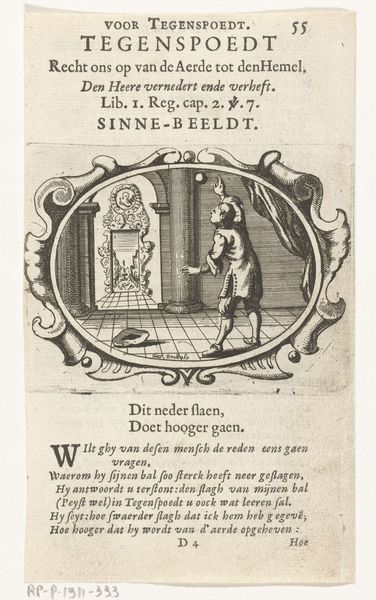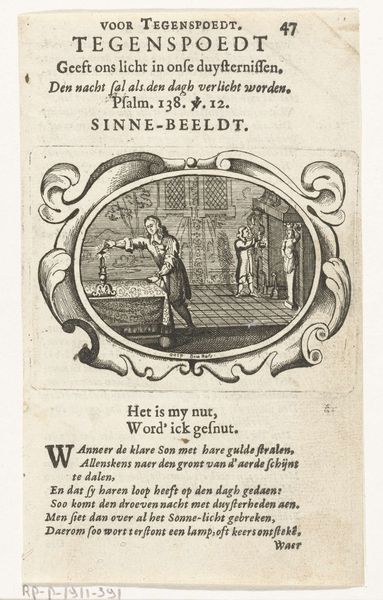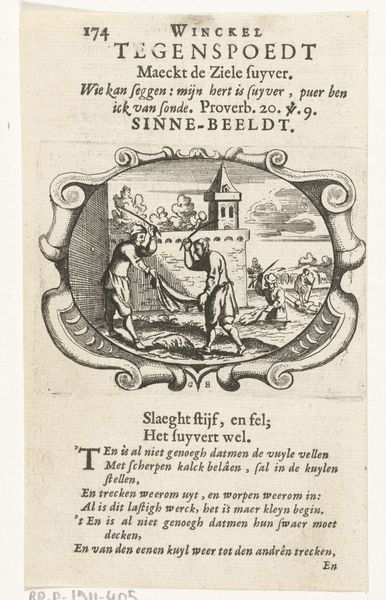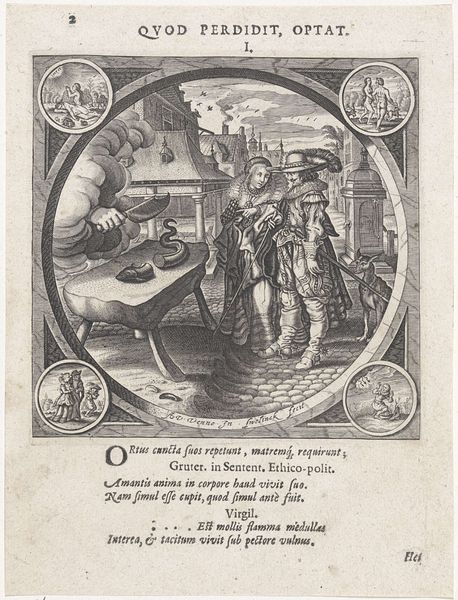
print, engraving
#
narrative-art
#
baroque
# print
#
engraving
Dimensions: height 145 mm, width 86 mm, height 64 mm, width 83 mm
Copyright: Rijks Museum: Open Domain
Curator: Welcome. Before us is "Tegenspoed leert ons God dienen," which translates to "Adversity teaches us to serve God". Gaspar Bouttats created this engraving in 1679. Editor: My initial reaction is how orderly this Baroque print appears despite the message it’s trying to convey. The fine lines, the symmetrical composition within the oval frame, create a sense of almost peaceful resignation. Curator: That tranquility contrasts interestingly with the historical context. 1679 was a tumultuous time in the Dutch Republic, still reeling from conflicts and economic hardships. Prints like these served as visual aids and moral guidance, reinforcing the idea that suffering has a divine purpose. It also offers visual material during a period of increased literacy rates. Editor: Looking at the visual construction, I'm drawn to how the artist balances the textual and visual elements. The ornate lettering, particularly in the title, mirrors the decorative frame surrounding the central image. It directs our attention inwards. Curator: Absolutely. And within that central image, you see a wealthy figure being carried, perhaps signifying someone burdened by earthly concerns. Notice how that contrasts to the lower-class observer on the left. The surrounding town reinforces the idea that everyone regardless of class must endure burdens and offer religious devotion to God. Editor: Indeed, the dynamism comes not just from the implied movement of the figures but from the careful arrangement of light and shadow. See how the artist uses hatching and cross-hatching to create a sense of depth and volume? It emphasizes the weight, both literal and figurative, that this figure carries. Curator: It's a reflection of the societal emphasis on the virtues of patience and submission. By circulating widely and presented with direct textual reinforcement, Bouttats' print provides visual instruction in that way that underscored dominant values in the Republic. Editor: Reflecting on this, it's remarkable how this print, with its refined lines, uses artistic restraint to amplify its core message. Curator: Exactly, reminding us that art serves as both a product of and reflection on the values held by a specific moment in history.
Comments
No comments
Be the first to comment and join the conversation on the ultimate creative platform.
